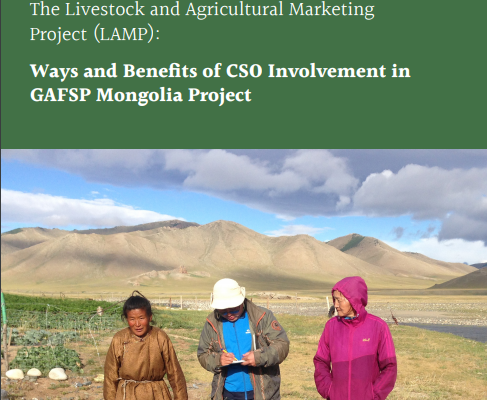Mongolia, a vast country of 1.56 million square kilometers, is home to 15 times more livestock than people. It has over 2.7 million human population and 43 million livestock as of 2010.
The transformation of Mongolia after the collapse of the Soviet Union from collective socialism to a market economy disrupted urban and rural livelihoods, ultimately leading to increased urban poverty and food insecurity. In the last decade, while the government’s agricultural and rural development program has met with some success, the poverty level has persisted above 30%.
The agriculture sector, which accounted for 15% of Mongolia’s Gross Domestic Product (GDP) in 2010 and provides livelihood to about 40% of the population, promises to be the avenue for addressing poverty. The livestock-based industry contributes to around 10% of all export revenues.
But Mongolia has been unable to take advantage of its exportation of meat and other by-products due to several constraints. On average, the export price for Mongolian meat is three to four times lower than the price commanded by Australian meat exports. The domestic market, with the expansion of more formal retailing outlets such as supermarkets, offers another opportunity for growth for the livestock industry.
Clearly, there is a need to strengthen linkages between producers and markets, and that is the goal of the Livestock and Agricultural Marketing Project (LAMP). There is currently no cohesive supply chain in Mongolia’s livestock industry. The industry must therefore institute measures to reinforce the supply-chain, such as a system to trace the provenance of each animal, and the improvement of animal breeding, nutrition and health.
The LAMP, funded under the Global Agriculture and Food Security Program (GAFSP) Multi-Donor Trust Fund, addresses five key issues that are in line with Mongolia’s National Livestock Program and National Food Security Program. These issues include: (i) stagnant and under-developed agro-industries and value chains that have not improved the income of herders; (ii) inadequate income and diet diversity of herders; (iii) weak veterinarian services that have led to slow infectious animal diseases response; (iv) collapse of the breeding system resulting in lower livestock productivity; and (v) lack of fodder and increased risk of livestock mortality during winter.
VIEW / DOWNLOAD: The Livestock and Agricultural Marketing Project(LAMP)
VIEW/DOWNLOAD: LAMP-Ways-and-Benefits-of-CSO-Involvement-in-GAFSP-Mongolia-Project




Comments are closed